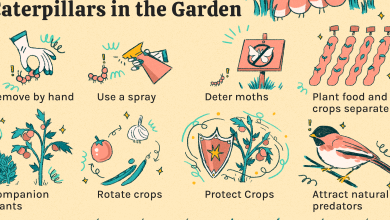Green Bugs on Plants: Complete Guide with Photos
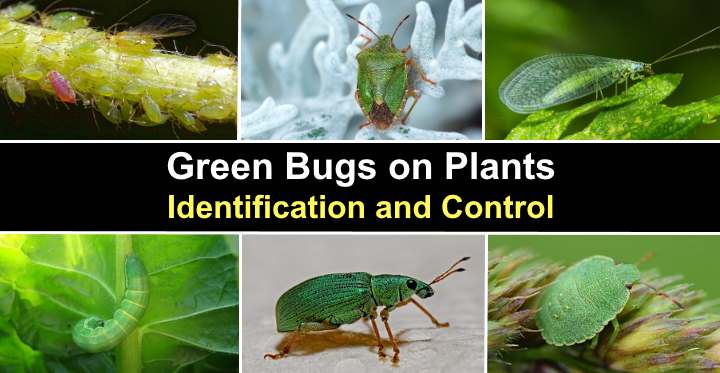
How are you agrohuerters? In today’s post, the protagonists will be the green bugs. Yes, only the green ones… another day we will look at more colors. They tend to camouflage themselves well, but we, who are on our way to being expert entomologists… We will be able to identify them all!
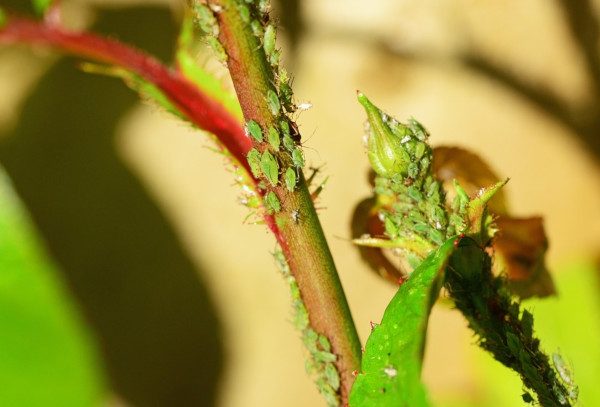
Green bugs on plants
Not all green bugs we see on our plants are considered pests. A pest is an organism that produces economic losses by reducing the availability, quality, or value of a resource grown for food, fiber, pleasure, or health. Also, it can be defined as any organism whose population density exceeds a previously established threshold.
Once we have this concept clear, we can begin to identify the green bugs on our plants and know if we should apply a treatment or not.
green aphids
Aphids are the best known green bugs and one of the most common pests of orchards and gardens. They are small insects (1-3 mm in length) and can have different colors depending on the species to which they belong.
aphid damage
Most are polyphagous, that is, they have no preference for a specific plant species. They attack the young shoots of crops with a high sugar content.
The larvae cause damage by burrowing into plant leaves. As for adults, they feed by sucking sap from leaves, buds and young shoots using the stylet of their mouthparts. In addition, they excrete a sticky, sugary liquid called honeydew that attracts ants (aphids are said to be ant herders because they protect them and guide them to food). They favor the appearance of a fungus known as bold and can also transmit viruses from one plant to another.
aphid control
Eliminate weeds, good preparation of the substrate, color traps, pruning or natural enemies such as ladybugs, lacewings, earwigs or wasps.
green bug
They are known as green bug or garden bug, among others. They are very common in hot countries. The eggs of these bugs are generally deposited on the underside of the leaves and are barrel-shaped, creamy yellow, which later evolves to orange-pink.
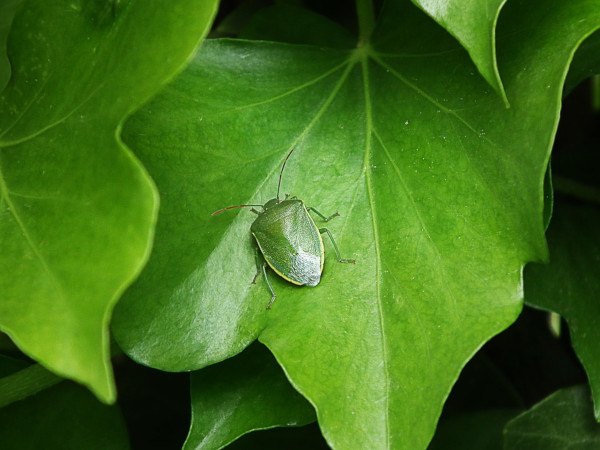
The nymphs, in their first instars, are orange in color and begin to be green in the fifth instar. Adults are green, although small yellow dots can be seen on the gusset. In addition, they have a biting-sucking mouthparts.
Green Bug Damage
They can be a pest of all kinds of horticultural plants, fruit shoots, vineyards and ornamental plants such as gladiolus. These types of insects suck sap or juices from leaves, shoots and fruits, and inject saliva that causes tissue damage. For example, in the tomato, growth stops at the point of the bite, forming cracks, deformations or a whitish circle around it.
How to control the green bug
To control this type of bedbugs, good irrigation management is essential, avoiding excessive humidity. We can set light traps at night to attract adults. Some spiders and ants are predators of the green bug and will help control it in the orchard. In addition, we can use trap plants such as beans to attract this type of insect to them.
Orthoptera (grasshoppers, crickets,…)
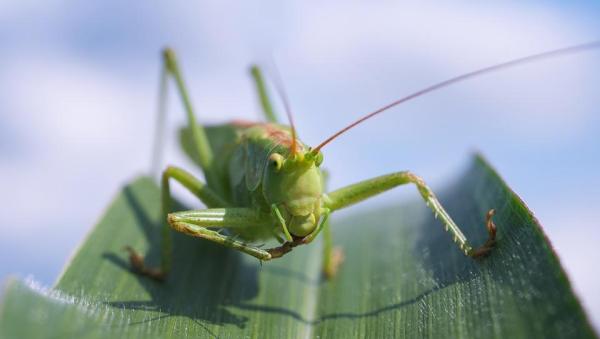
Grasshoppers, crickets or locusts belong to this group. Orthoptera are characterized by being good jumpers and some good fliers. They lay on the ground or on the plant. They normally lead an isolated life, although they can show gregariousness phenomena as in the case of lobsters.
There are various methods to control this group of insects. Highlight biological control through predators, parasitoids and fungi. In the case of lobsters, there are special programs for their surveillance and control.
beetles
Cassida sp.
From the family of the Chrysomelidae. The larvae, usually flattened, are green with lateral spines and two appendages on the eighth segment. It is usually covered with exuvia and excrement. Both adults and larvae feed on the parenchyma and can defoliate (defoliate) the plant.
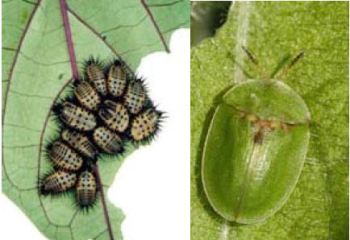
mint beetle
It measures 7-11 mm in length. They have a bright green color, with black legs and antennae. Both adults and larvae feed exclusively on mint, and can become a dangerous pest. They mainly attack leaves and stems.
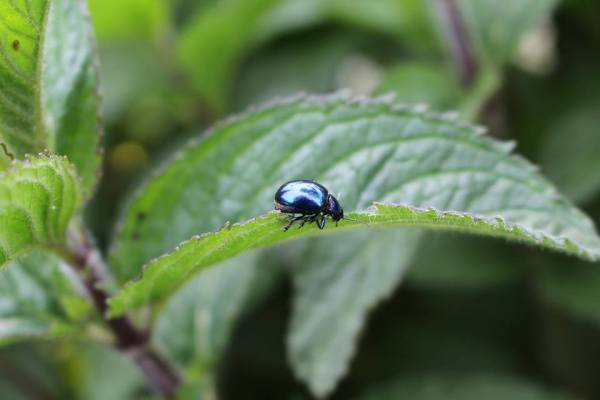
Other more peculiar green bugs
praying mantis
There are other green insects, such as the Praying Mantis, that are not a concern for the orchard. The Praying Mantis is a predator of insects and, as a curiosity, there is a martial art inspired by its way of attacking prey.
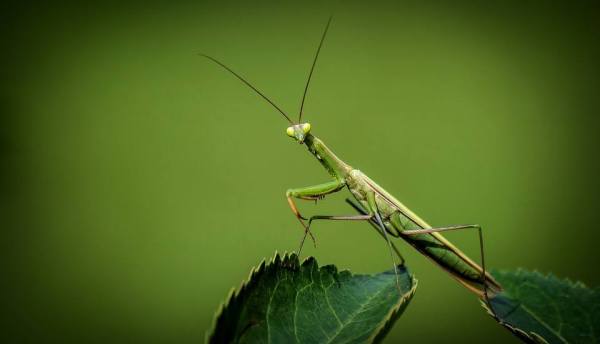
Stick insects and leaf insects
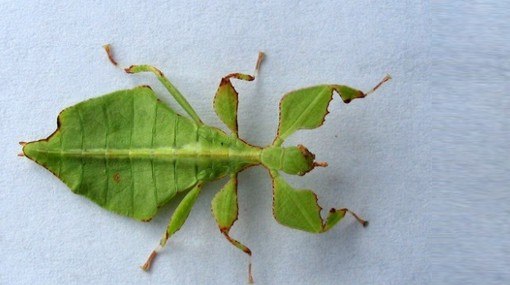
References
- Lawrence, SE (1992). Sexual cannibalism in the praying mantid, Praying Mantis: a field study. Animal Behaviour, 43(4), 569-583.
- Schmidt MH, Lauer A, Purtauf T, Thies C, Schaefer M, Tscharntke T (2003).Relative importance of predators and parasitoids for cereal aphid control. Proceedings of the Royal Society B: Biological Sciences, 270, 1905–1909.
- Simon, J., Peccoud, J. (2018).ScienceDirect Rapid evolution of aphid pests in agricultural environments. Current Opinion in Insect Science, 26, 17–24.
I hope you have become a little more familiar with these types of green bugs and that you tell us about your experiences in the comments. In future articles we will learn more about other types of insects.
Have a good week agrohuerters!



